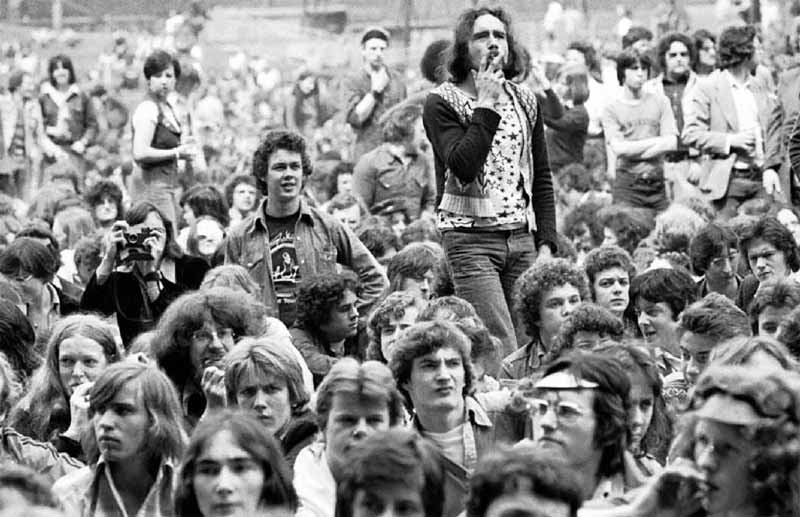 Crowd funding is so huge now that the U.S. Securities and Exchange Commission is subjecting the hot fundraising trend to a serious regulatory review (and yes, you should probably be worried — but you already knew that.)
Crowd funding is so huge now that the U.S. Securities and Exchange Commission is subjecting the hot fundraising trend to a serious regulatory review (and yes, you should probably be worried — but you already knew that.)
We’re talking about sites like Kickstarter, PledgeMusic and IndieGogo — places where creative entrepreneurs can tap the power of the Internet crowd to pay for their projects and businesses. By collecting small amounts amounts of money from a large group in exchange for perks, these platforms aggregate the finances of the many to serve a specific financial goal set by the creator.
For musicians, there is another crowd funding option available, what I would call “exclusive subscription platforms.” These include Sellaband, Artistshare and Patronism. Here you can charge fans a regular subscription fee, and they get access to exclusive, behind-the-scenes content delivered by you on a regular basis. It’s likely we’ll see the two models continue to converge in the next few years, perhaps until they are indistinguishable.
For musicians, this should be an exciting time. Musician Amanda Palmer just raised $1.2 million dollars on Kickstarter. Maybe you’re not the hyper-talented, super-creative, digital media whiz she is. Maybe you have a fan base of hundreds rather than thousands. The truth is you only need a few dozen fans to raise a few thousand dollars in a matter of months. I’ve seen it happen with some regularity.
Unfortunately, I’ve heard from plenty of musicians that don’t crowd fund for a number of reasons — even a few who did the whole thing, raised their goal money, and still hated the experience. Granted, it’s is not for everyone. But it’s here to stay and will only grow in time. More importantly, crowd funding is not based on exploiting musicians yet raises significant chunks of cash for us, and therefore deserves our support as a business model. In a way, crowd funding is the new patronage. Therefore, I would highly recommend that musicians start getting used to the following three scary things, and overcome for the sake of their ability to make money playing music.
Scary Crowd Funding Thing #1 – We can’t beg our fans for money.
At first I was surprised that this was the top reason musicians were scared to get into crowd funding. Then I remembered that most musicians are allergic to business and understandably would feel conflicted. But as I’ve pointed out before, until a manager comes along, you are your own manager. And you’re just not managing a business if you’re not taking advantage of the hottest revenue stream to happen to musicians in a long time.
There are easy ways to get around you having to physically appear on camera asking your supporters for money. You can simply use text and images to communicate the goal of your fundraising project. Or find someone peripheral or unrelated to the project to ask for you. If you object to the concept on philosophical grounds, I can respect that. But realize that if you have a merch table, you’re already asking your fans for money. Crowd funding is not analogous to begging — they will understand you’re just asking for their support, and they won’t feel obligated if they don’t want to give it. It’s certainly less awkward than asking fans to go to iTunes and pay Apple a fee to access to your music.
Scary Crowd Funding Thing #2 – I don’t know what to provide as incentives.
This is super-easy to solve. Something I encourage all musicians embarking on crowd funding is to do some research on their platform of choice and compare platforms to find the best fit for you. Take a look at similar musicians with similar funding goals in similar genres. Check out their incentives, and see what’s perks are hot and what’s getting ignored. This should give you a really good idea of what incentives will work for you. Setting these up can be the most fun part! Actually creating them and shipping them to all your backers can be a nightmare though, so don’t bite off more than you can chew. The goal here is not to sell merch pre-orders, but to raise money well over the cost to produce the perks. The other thing to remember is that some perks don’t involve an outlay of cash. In fact, the sweat-equity perks like commissioned songs, autographs and original artwork are some of the most premium and well-paid for.
Scary Crowd Funding Thing #3 – What if I set my fundraising goals too high or too low?
Many bands I talk to simply aren’t confident they can raise the amount they’d really like, so they settle on something super-conservative, reasoning that any overage is icing on the cake. Too often, however, they are leaving hundreds or thousands of dollars on the table. Remember there is a flurry of backing action in the closing days of a drive that’s close to reaching its goal. If it’s already met ahead of time, money will continue to trickle in, but not the way it would have if you were a grand or so away from crossing the finish line.
Some bands seize on this and choose to beef up their asking amounts, holding in reserve a grand or so of their own money to artificially increase their asking amount by the same figure they hold in reserve. This way, they can pump cash into their project at the last minute if they fail to generate last-minute support they sought and still make their goal. At the same time, you don’t want to blow the whole thing and ask for more than you can realistically raise, or have to rely on more of your own money than you bargained for to meet your goal.
Again, figuring out how much to ask for isn’t as tough as you might think. You can probably write a short list of the people you feel would give you at least $100 on the spot for a set of cool perks. It’ll include super fans you know by name, as well as friends, family and colleagues you think you can get significant support from. You can also easily estimate how many fans would shell out $20 for a modest perk. Dividing your total Facebook following by ten is a good place to start, but use your intuition and your knowledge of your fan base’s past purchase behavior. Finally, as in step #2, carefully research what comparable bands are asking for in relation to comparable projects and perks.
This should give you a ballpark of what to ask for. You could round this number down to the nearest thousand to be safe. You could add a grand if you feel like you’ll be expanding your fan base during the crowd funding drive. But you won’t get any money without asking, so it’s best to just set a number and see how it goes. Get out there and start crowd funding — and don’t forget that once you start, you’ll have a lot of hard work promoting your funding drive ahead of you. That hard work, however, will pay off nicely if you truly rise to the challenge.

